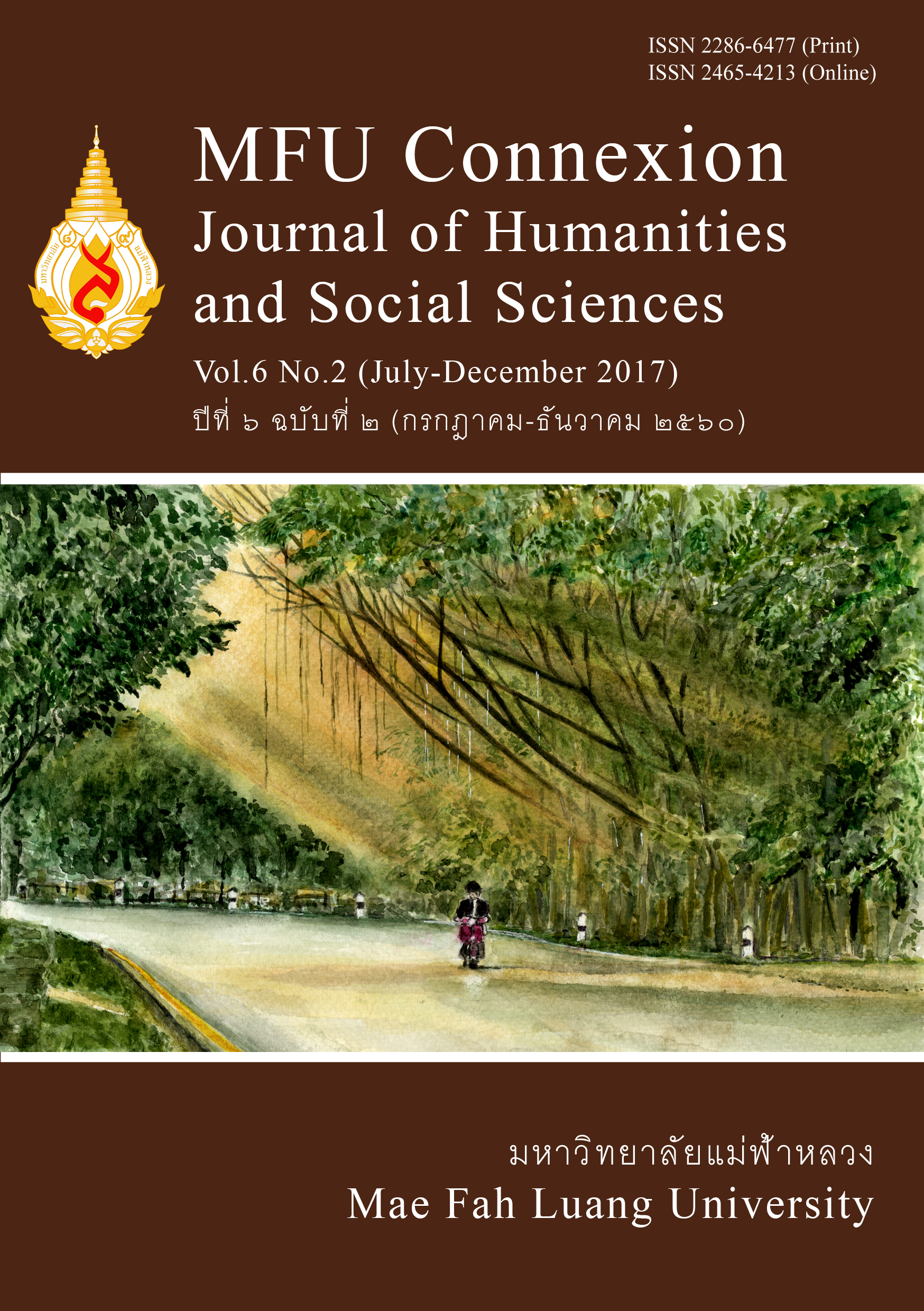Determinants of Green Consumption of Generation Y in Chiang Mai, Thailand
Main Article Content
Abstract
This study aims to explore green consumption behavior, assess generation Y consumers’ willingness to pay (WTP) price premium, and identify the factors that influence WTP price premium for green products. The word “green” means good for the environment. The authority in Chiang Mai, the second largest city in Thailand, is espousing strategies to transform it into a green city. Given that different generations hold diverse attitudes (including those related to the environment), the particular attitude of generation Y should be considered in the near future. Hence, this research surveys 1,200 Chiang Mai respondents. Results show that most generation Y consumers are concerned with green consumption, but such concern is at the medium level. Moreover, 78% of generation Y respondents are willing to pay price premium for green products (indicating that they can afford more of such products), but their level of acceptability still varies considerably. An ordered logit model shows that education level, income, gender, familiarity with green products, confidence in green product certifications, perception of green product quality, and degree of environmental concern significantly affect WTP price premium for green commodities.
Article Details
Copyright
Connexion: Journal of Humanities and Social Sciences has an exclusive right to publish the accepted articles in any form. However, the author retains the following rights:
1. The right to the ownership of the article;
2. The right to use all or part of the article in his/her other works;
3. The right to re-produce the article for personal use or for use in the author’s organisation, in which case the author must obtain permission from Connexion: Journal of Humanities and Social Sciences;
4. The right to make copies of all or part of the work for educational use or for the author’s use in classroom teaching; and
5. The right to include the work (both the preprinted and printed versions) in an institutional repository.
References
AirDye. (2011) Green is gold - Consumers want eco-friendly products® - good for business, Available: https://blog.airdye.com/goodforbusiness/2009/06/08/green-is-gold/> [20 August 2015]
Berry, B. (2007) Going green: The future of the retail food industry, agri-food trade service, Available: www.ats.agr.gc.ca [13 January 2015]
Broadbridge, A., et al. (2007) Experiences, perceptions and expectations of retail employment for generation Y, Career Development International, vol. 12, no. 6, pp. 523-544.
Cui, Y., et al. (2003) Cause-related marketing: How generation Y responds, International Journal of Retail and Distribution Management, vol. 31, no. 6, pp. 310-320.
Komchadluek. (2013) Enjoy buying vegetables in QR code era, Available: https://www.komchadluek.net/news/lifestyle/161119 [7 July 2016]
Kumar, A. & Lim, H. (2008) Age differences in mobile service perceptions: Comparison of generation Y and baby boomers, Journal of Services Marketing, vol. 22, no. 7, pp. 568 - 577.
Morton, L. P. (2002) Targeting generation Y, Public Relations Quarterly, vol. 47, no. 2, p. 16-26.
Ordun, G. (2015) Millennial (Gen Y generation Y) consumer behavior, their shopping preferences and perceptual maps associated with brand loyalty, Canadian Social Science, vol. 11, no. 4, pp. 40-55. doi: 10.3968/6697
Ottman, J. (1997) Green marketing opportunity for innovation, Lincolnwood, ILL: NTC, Business Books.
Sena, M. (2016) Green industry analysis 2016 sustainability, the green industry, and you, Available: https://www.franchisehelp.com/industry-reports/green-industry-report/ [7 July 2016]
Suciarto, S. A., et al. (2015) Influence of green marketing toward purchase intention of green products through attitude: Survey on Indonesian and Taiwanese Students, International Journal of Humanities and Management Sciences (IJHMS), vol. 3, no. 4, pp. 198-202.
Talbott, S. L. (2012) Generation Y and sustainability, Knoxville: University of Tennessee.


